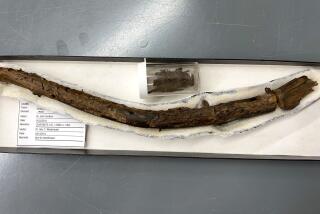Climbing Queen
Called “the queen of the climbers,” clematis was cherished in Victorian times as a drape of choice for a deep front porch. And while a certain old-fashioned preciousness still clings to it, Southern California gardeners have broadened their horizons beyond the jumbo bloomers Victorians loved. An evergreen or deciduous climber and scrambler, clematis grows wild across Europe and Asia and throughout Central and North America. Its range of habitats, from cool mountaintops to fertile river valleys to dry, hot Mediterranean islands, has produced species that thrive in shade (alpina, macropetala), baking sun (viticella, flammula), and even thin, poor soil (stanleyi). The popular ‘Jackmanii,’ born in 1862, with flowers half a foot wide, is only one among hundreds. Marmoraria grows a mere four inches high; vitalba can reach 50 feet. And to complicate matters, different clematis bloom at different times of year--great for a garden, rough on the gardener who has to figure out when to prune.
But which clematis is right for your garden? Beyond their cultivation needs (light, water), you need to know how big your favorites grow. No matter how much you love ‘Montana,’ which gets very tall and very heavy, you might not want it on your garage. In general, some of the shorter types among the viticellas are a better choice for city gardens--and for the Southern California climate.
When you bring your plant home, site it carefully. Give climbers something to cling to--stakes or trellising--and plan to tie them up as they develop. Prepare a broad, deep planting hole, mixing in organic compost and setting the rootball two to four inches below the soil surface, a depth that will help the plant form new growth if attacked by its major foe, clematis wilt. Keep soil moist but not soggy, shade roots with organic mulch or a low-growing companion plant and feed monthly during growth with a balanced, all-purpose food, such as a mild liquid fertilizer.
As to cutting back, resign yourself. English gardener and writer Christopher Lloyd compares the look of unpruned clematis to “a disemboweled mattress.” And here’s the program: To make them bushy and strong, snip all young plants back to a foot above the ground after their first winter. After that, plants fall into three groups: those that flower early on the previous year’s growth (these include montana, macropetala, alpina), those that flower in spring or summer on old growth and sometimes rebloom later (many large-flowered hybrids), and those, such as tanguticas and viticellas, that bloom only on new growth. Give the first group a light clip after they bloom. Cut the second group back at the end of winter by about 6 to 10 inches, taking out old growth and separating stems. Prune group-three plants hard in early spring to about 2 1/2 feet, where new leaf buds are appearing.
It sounds hard, but it’s not once you get your schedule down. Your reward is a plant that just might be your garden’s star.






